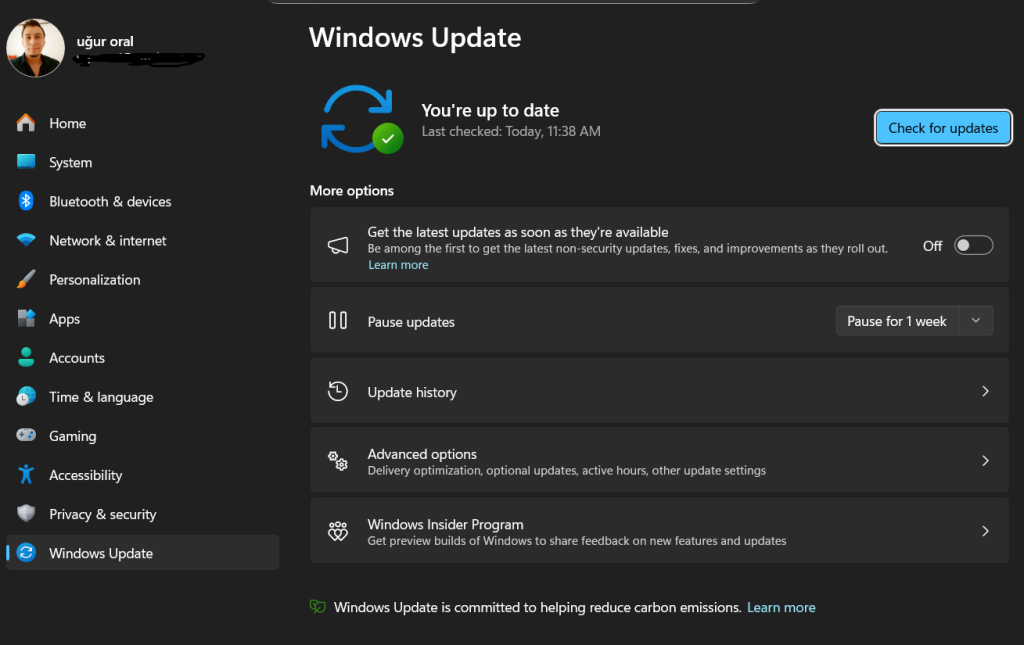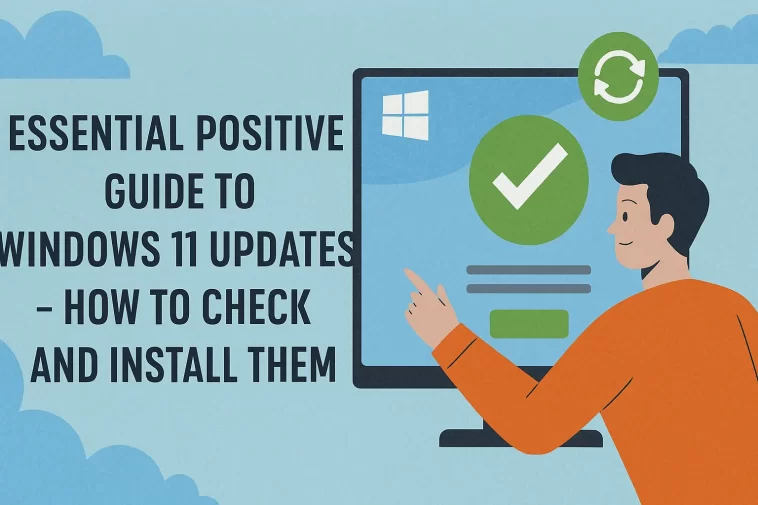Windows 11 updates how to check and install is one of the most important topics for anyone using a modern Windows device. Keeping your Windows 11 system updated ensures stronger security, better performance, new features, and a more stable computing experience. Whether you’re a beginner or a long-time Windows user, knowing how to check and install updates properly is essential for maintaining a smooth-running PC.
Windows 11 receives frequent improvements, and each update brings enhancements such as security patches, bug fixes, driver upgrades, design tweaks, and new features powered by Microsoft’s latest technologies. In this comprehensive guide, you will learn everything about Windows 11 updates how to check and install—from manual checks to scheduling updates, troubleshooting problems, managing optional driver updates, and installing major feature upgrades. By the end, you’ll master the entire process step by step.
Why Windows 11 Updates Matter
Windows 11 updates how to check and install is a topic that matters because updates ensure your system stays secure and stable. Cyber threats continue to grow every day, and Microsoft constantly releases patches to protect users from security vulnerabilities. If your operating system is outdated, you may become exposed to malware, ransomware, or hacking attempts.
Updates also improve performance by fixing background process issues, optimizing memory usage, boosting system responsiveness, and reducing crashes. Many gamers notice smoother gameplay after driver and performance-related updates.
Moreover, updates often fix bugs—such as screen flickering, Wi-Fi issues, Bluetooth connection problems, printer errors, and app crashes. This is why Windows 11 updates how to check and install should be part of your regular computer maintenance routine.
Another reason updates matter is feature enhancements. Microsoft frequently introduces new designs, interface elements, and productivity features such as improved File Explorer layouts, better system tray functionality, improved search performance, and optional AI-powered tools.
How to Access Windows Update Settings
Understanding Windows 11 updates how to check and install begins with knowing where to find the update settings.
To get started, open the Start Menu and click Settings, or simply press Win + I on your keyboard. This shortcut instantly opens the Settings app.
In the Settings menu, look at the left sidebar and click Windows Update. This is your main control center for all Windows updates. Here, you can check system status, view available updates, install driver updates, manage settings, pause updates, or schedule restarts.
How to Check for Updates Manually
At the top of the Windows Update page, you will see a button labeled Check for updates. Click this button to trigger a manual search. This is the most direct method within the topic of Windows 11 updates how to check and install.
After clicking the button, Windows will connect to Microsoft servers to determine if there are any new:
- Security patches
- Cumulative updates
- Driver updates
- Feature updates
- Optional updates
- Monthly quality updates
Once results appear, you can review each update. If updates are found, simply click Download & Install. The system begins downloading in the background. When the download is complete, Windows may prompt you to restart the device to apply changes.

Types of Updates You May See
Understanding the different types of updates is a key part of Windows 11 updates how to check and install.
Cumulative Updates
These include bug fixes, system improvements, and security patches bundled together.
Security Updates
These updates fix vulnerabilities in Windows components.
Driver Updates
These update hardware elements such as GPU drivers, sound drivers, wireless adapters, and more.
Feature Updates
These are major releases like 22H2, 23H2, and upcoming versions. They introduce major improvements, UI changes, and new capabilities.
Optional Updates
These may include additional driver updates, firmware upgrades, or feature previews.
How to Install Windows 11 Updates Properly
Once available updates appear, click Download & Install. Windows will download these updates automatically. During this stage, avoid shutting down your PC.
When the installation package is ready, Windows 11 will alert you that a restart is needed. You can choose Restart now or set a scheduled time to restart later. Restarting is required for most updates to take effect.
To avoid interruptions, keep your PC plugged in and connected to the internet during the update process.
Scheduling Updates and Active Hours
A vital part of Windows 11 updates how to check and install is knowing how to control update timing. Windows 11 allows users to define Active hours, ensuring your PC does not restart while you are working.
To set this:
- Open Settings
- Go to Windows Update
- Click Advanced options
- Select Active hours
- Choose the time range when you regularly use your device
Windows will avoid restarting your PC during these hours.
You can also pause updates for up to five weeks. This is especially useful if you’re traveling, working on important projects, or gaming.
Managing Optional Updates and Driver Updates
Many users do not realize that Windows 11 hides important updates under Optional updates. This section often contains driver updates for:
- Graphics cards
- Printers
- Bluetooth devices
- Wi-Fi adapters
- Motherboard or chipset components
To access optional updates:
- Open Settings
- Select Windows Update
- Click Advanced options
- Select Optional updates
Installing these updates can improve device stability, performance, and compatibility—making this step an essential part of Windows 11 updates how to check and install properly.
Troubleshooting Update Issues
Sometimes Windows 11 updates fail due to corrupted files, unstable internet connections, insufficient storage, or internal system errors. These issues are common, but most can be fixed easily.
Restart Your PC
A simple restart often resolves temporary problems.
Use the Windows Update Troubleshooter
Windows offers a built-in diagnostics tool that automatically repairs update issues.
- Open Settings
- Go to System
- Click Troubleshoot
- Select Other troubleshooters
- Run the Windows Update troubleshooter
Free Up Storage
Major updates may require up to 30 GB of disk space.
Reset Windows Update Components
Advanced users can reset update files using PowerShell or Command Prompt.
These troubleshooting steps are critical knowledge when learning Windows 11 updates how to check and install efficiently.
Installing Major Windows 11 Feature Updates
Major updates such as 22H2 or 23H2 introduce significant improvements. Installing them is similar to regular updates but may take longer.
To install major feature updates:
- Open Settings
- Go to Windows Update
- Look for “Feature update to Windows 11”
- Click Download & Install
These updates are larger and may require a longer restart period.
Tips to Keep Your System Updated Automatically
If you want Windows 11 updates how to check and install to become effortless, enable automatic updates. Windows will download necessary patches in the background.
Here are helpful tips:
- Keep your device connected to Wi-Fi
- Plug in your laptop when applying updates
- Restart your PC weekly
- Check optional updates monthly
- Clear disk space regularly
Conclusion
Windows 11 updates how to check and install is a fundamental skill for any computer user. Updates keep your system faster, safer, and more reliable. Whether you’re installing security patches, checking optional drivers, managing active hours, or applying major feature updates, staying informed ensures a smooth Windows experience.
With this detailed guide, you can now confidently navigate all aspects of Windows 11 updates and keep your system running at its best.

